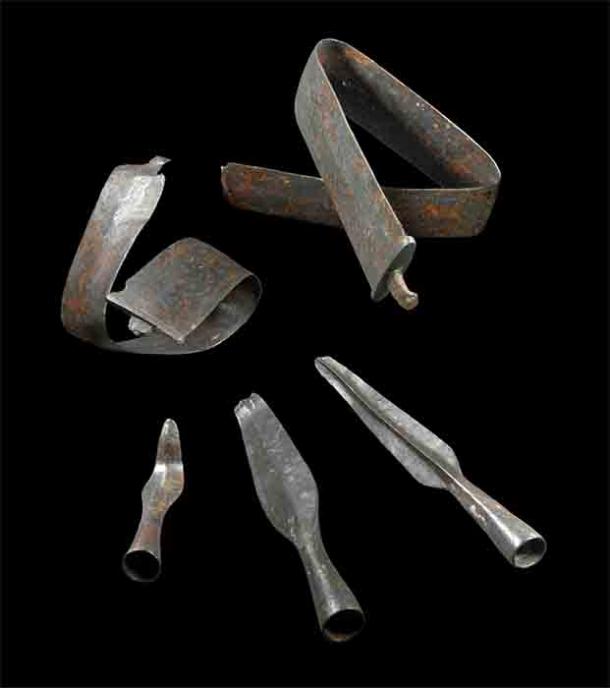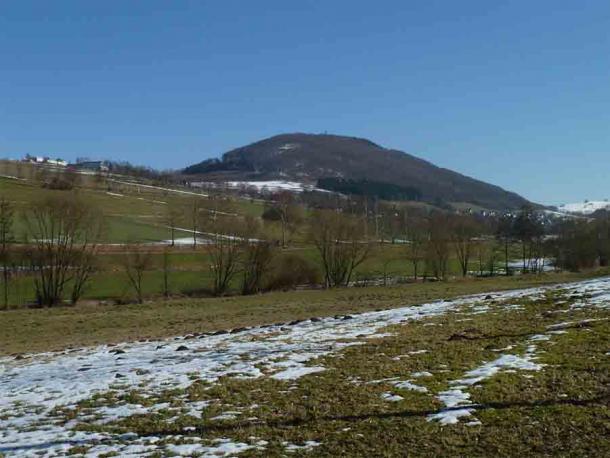A massive Iron Age weapons armory has been discovered in North Rhine-Westphalia at Wildenberg Castle, Germany, the biggest find of its kind ever. Archaeologists from the reputed Regional Association of Westphalia-Lippe (LWL) in Lippstadt, who’ve been working on this site for more than 3 years, have dated most of the finds in the Iron Age weapons stash to between 300 BC and the first century BC.
In a translated statement released on March 31 st of this year, Michael Baales, one of the archaeologists on the LWL team and head of the Olpe branch in North-Rhine Westphalia said, “The arsenal is the largest in [the German state of] North Rhine-Westphalia and also links the [state’s region of] Sauerland with complex processes in Iron Age Europe.”
Iron Age Weapons Hoard: The Spoils of Victory in War
The stash was stumbled upon by local historian and researcher Matthias Dickhaus, who conducted a metal detector survey of the area for the LWL. According to Dr. Manuel Zeiler, an LWL archaeologist, the artifacts recovered included 150 objects in total: 40 spearheads and lance tips, swords, fragments of shield bosses (the round structure at the center of a shield), tools, belt hooks, horse gear, silver coins, bronze jewelry and a fibula bone .

This nationally rare bridle has two side handles with which the horse could be guided. (Hermann Menne / LWL-Archeology for Westphalia )
The peculiarity and historical significance of these finds lies primarily in the fact that they were damaged or bent, deliberately. This was evidence of how Iron Age warriors celebrated their victories over the losing side and what they did to the weapons they took from the losers.
As per Heritage Daily , Dr. Manuel Zeiler said, “According to current research, it is conceivable that a fight took place in the area around Wildenberg and that the winners completed their triumph by bringing the captured weapons, belts and harnesses to the Wallburg.” The damaged pieces were then probably put on display.

Iron Age weapons found at the Wildenberg Castle site that show how they have been purposely bent in an act of war trophy defilement or a victory ritual. (Hermann Menne / LWL-Archeology for Westphalia )
A weapons stash found in the same area during the 1950s, along with the current discovery, shows that perhaps this was a show of ritual superiority and strength, post victory. Historical evidence from other Iron Age cultures shows that this was a commonly followed practice, linking the area of Sauerland to other Iron Age areas.
The evidence is juxtaposed with French research that shows that cult acts in Iron Age Europe took place in the Celtic area and its periphery, where weapons of weaker opponents were destroyed after the battle.
This would indicate clearly that the damaged weapons were not a consequence of the battle, but a ritual that happened after the battle. In any case, there is no historical evidence that suggests that Wildenberg was a battlefield. Additionally, a particularly rare kind of horse snaffle was also found at the site, which is a bridle used to expertly maneuver and guide horses pulling a chariot.

A view of the “Holy Mountain” of Sauerland, where the Iron Age weapons were found. (Michael Baales / LWL-Archeology for Westphalia )
The History of the “Holy Mountain” at Sauerland
What is known by the locals in the area as “The Holy Mountain,” the Wildenberg hillfort is located on a 2,158 feet (658 meters) tall mountain. Evidence of this site being used during the Iron Age has been found from 300 BC to the 1 stcentury BC. The locals also call the ancient walls Wallburg, which are still very much intact and visible to hikers and tourists who visit the site.
In the 1950s, when workers were constructing a pavilion in the area, two swords, two spearheads and two lanceheads were accidentally unearthed. The tips had been purposefully deformed, and the weapons bent and damaged. According to Live Science , it was only in 2013 that the archaeologists began thorough excavations in this area. Metal detector surveys began in 2018.
Matthias Dickhaus and his metal detector survey team found 100 objects in total, and dating has shown that the coins and swords were from the 1st century BC, according to Zeiler.
Burkhard König, Mayor of the City of Schmallenberg was quoted as saying, in the LWL press release , “Wildenberg with its long, eventful history is an integral part of the development of the City of Schmallenberg. In addition to many visible, but also many hidden artifacts, the new weapon discovery underscores its importance I would like to thank all those involved, especially the LWL, for their efforts and warmly congratulate them on the discovery.”
Top image: Iron Age weapons and other artifacts found at the Wildenberg Castle site in Germany. Source: Hermann Menne / LWL-Archeology for Westphalia
By Rudra Bhushan
 RSS Feed
RSS Feed















 April 23rd, 2021
April 23rd, 2021  Awake Goy
Awake Goy  Posted in
Posted in  Tags:
Tags: 













